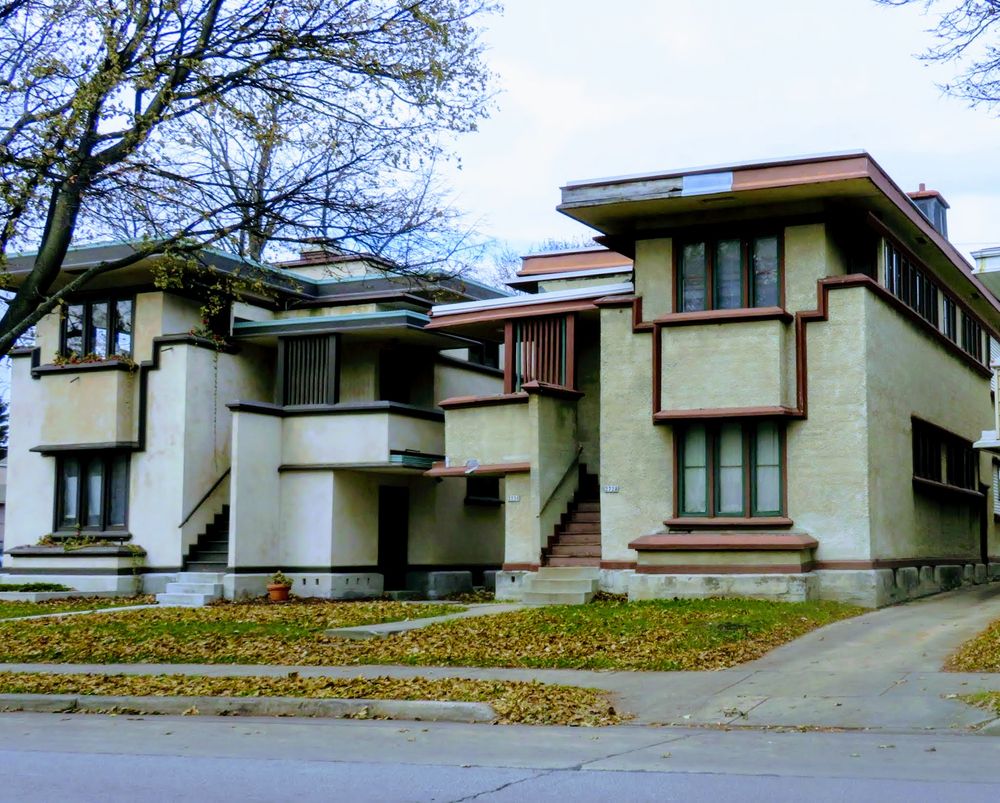#11991. Organic Prairie Style Façade: Horizontal Lines and Natural Integration
Before us stands an expressive example of architecture in the style of Frank Lloyd Wright, demonstrating the characteristic features of the "Prairie style." The building is distinguished by its horizontal composition with prominent projecting eaves of the flat roof, which create a sense of connection with the ground and emphasize the extension of the structure.
The façade demonstrates masterful use of contrasts: light stuccoed walls are framed by dark wooden elements, creating a clear geometric structure. Particularly noteworthy are the window groups, separated by vertical elements, which form a rhythmic pattern and provide abundant natural lighting to the interior spaces.
The staircases on the façade are integrated into the overall composition, emphasizing the multi-level nature of the building and creating a dynamic transition between volumes. The architect used the technique of overhanging volumes and a stepped composition, which gives the building depth and an interplay of light and shadow.
When designing a modern façade, several techniques can be borrowed: contrasting combination of materials, horizontal lines for visually expanding the space, projecting eaves for creating shade and protection from precipitation, as well as the integration of architectural elements into a unified composition. This approach allows for the creation of a harmonious building that interacts with the surrounding landscape and expresses the individuality of its inhabitants.
